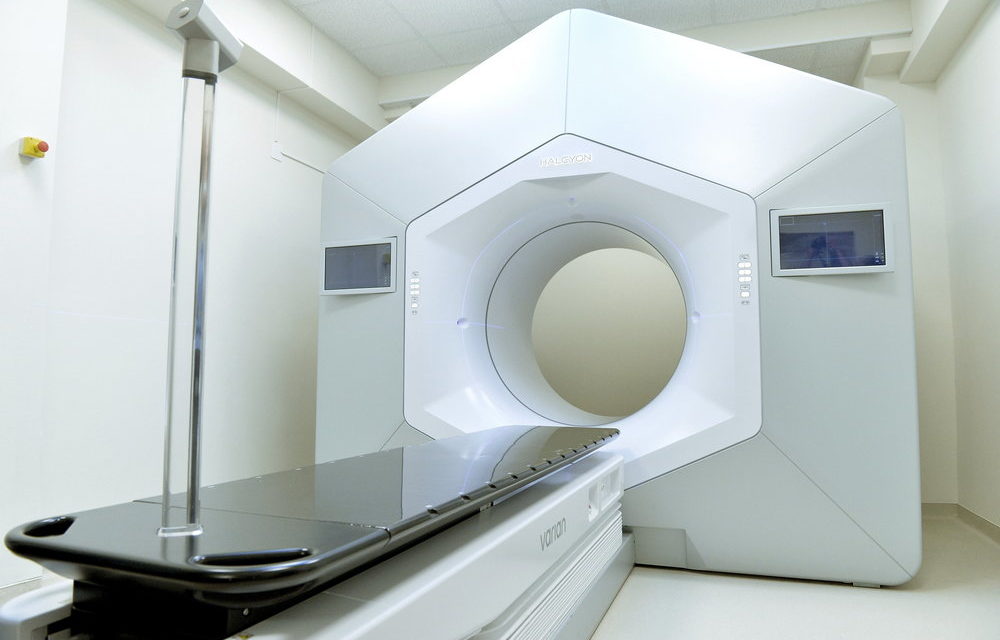Radiation therapy device development was implemented at the National Oncology Institute from HUF 1.9 billion as part of the Healthy Budapest Program (EBP). With the new equipment, they can also increase the efficiency of treatment and therapy.
At the press conference before the ceremonial handover of the new radiation therapy devices on Monday, Miklós Kásler, the Minister of Human Resources, said that the institute received a thousand new medical technology devices worth about four billion forints in the framework of the EBP in recent years. They have now acquired two linear accelerators, a brachytherapy refill and a radiological ultrasound machine.
It was said that the two new linear accelerators represent the most modern technology currently available and enable the use of the latest external irradiation techniques in the treatment of cancer patients.
Miklós Kásler emphasized that the oncology institute's "traditions are extraordinary" and that it always used top technology. Furthermore, Hungarian oncology research has always been at the forefront of the world, he added.
The minister stated: without the pioneering steps, Hungarian oncology would not "be here", and the same trends would be the same as they have been for decades: increasing mortality in addition to increasing cancer cases.
Currently, according to data, the number of cancer cases is increasing, and the resulting death rate is decreasing "extremely solidly".
Attila Tóvizi, ministerial commissioner responsible for the Healthy Budapest Program, said that the EBP was launched by the government in 2017 with the aim of developing the health institutions of the central region. Developments are focused on three areas: medical technology for device procurement, IT renovation and infrastructure improvements.
In recent years, HUF 81.7 billion worth of development was carried out exclusively in Budapest and Pest county, he said.
Attila Tóvíz emphasized that the developments will continue.
Csaba Polgár, the director general of the National Oncology Institute, said that the replacement of the institute's radiotherapy machines was carried out in two stages, and was completed with the current purchase. Thanks to the developments, all of the radiation therapy devices in the institute represent the most modern technology, he pointed out.
Zoltán Takácsi-Nagy, Deputy Director General of the National Oncology Institute, spoke about how, in addition to irradiation, a three-dimensional imaging system is integrated into the two linear accelerators, with the help of which information on the position of the tumor can be obtained not only before the treatment, but also during the treatment. This makes it possible to make corrections during treatment if necessary, and thanks to this, healthy tissues are spared, and the tumor always receives the necessary dose. All this results in the improvement of the patients' quality of life, he pointed out.
Zoltán Takácsi-Nagy emphasized that with one of the linear accelerators, it is possible to precisely irradiate "moving" tumors. This may be particularly important for breast tumors.
The purchased machines can inject the given radiation into the tumor much faster, so more patients can be treated in a given time, he said.
He emphasized: with the new equipment, they can also increase the efficiency of treatment and therapy.
Zoltán Takácsi-Nagy said about the brachytherapy refill that radioactive isotopes are introduced into the tumor with the high-tech device. CT and MR compatible applicators make radiation planning even easier for tumor localization. With this, better results can be achieved in the case of gynecological tumors, he noted.
Zoltán Takácsi-Nagy also stated that during the development, software development and hardware expansion were also realized, which made it possible for even more workstations to be involved in the irradiation planning processes.
MTI
Photo: MTI/Lajos Soós













